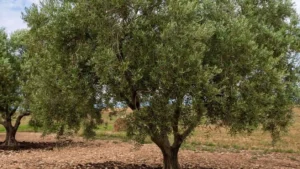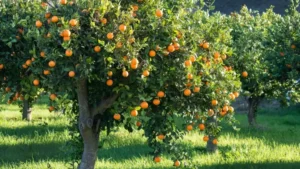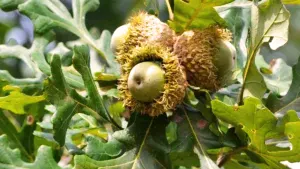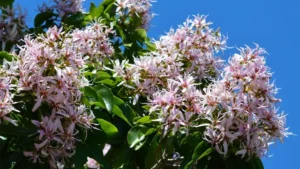Indian Laurel Tree
- November 7, 2024
- 0 comment
The Indian Laurel Tree, scientifically known as Ficus Microcarpa, is a large, evergreen tree valued for its ecological benefits and distinctive appearance. Often found in urban landscapes as well as natural ecosystems, the Indian Laurel plays a significant role in biodiversity, offering shelter, food, and soil stability in its native range. With its dense foliage, intricate root systems, and tolerance to a variety of environmental conditions, the Indian Laurel Tree is both resilient and ecologically beneficial.

As a member of the fig family (Moraceae), this tree belongs to a diverse group that includes many other ecologically important plants. In ecosystems, the Indian Laurel Tree supports local wildlife, contributes to soil health, and helps maintain air quality. Its hardiness and versatility also make it a popular choice for landscaping and urban green spaces, where it provides shade, improves air quality, and enhances soil stability.
What Is an Indian Laurel Tree?
The Indian Laurel Tree, or Ficus Microcarpa, is part of the Moraceae family, which also includes other species of figs and rubber trees. This tree is characterized by its glossy, dark-green leaves, smooth bark, and expansive, sometimes aerial, root systems. Ficus Microcarpa can grow quite large, reaching heights of up to 50 feet or more in ideal conditions, with a dense canopy that provides ample shade.
The tree produces small, inconspicuous flowers that eventually yield small fruits, which serve as a food source for many local birds and animals. One of the most fascinating aspects of the Indian Laurel Tree is its adaptability—it can grow in various soil types and climates, from tropical to subtropical regions. It is also known for its longevity, with some specimens living for over a century. In addition to supporting the ecosystem, this tree has a unique relationship with soil, where its roots help prevent erosion and improve soil fertility.
3 Different Types Species of Indian Laurel Tree
Within the broader Ficus genus, Ficus Microcarpa is one of the most well-known species commonly referred to as the Indian Laurel Tree. Other notable species within the Ficus family include:
Ficus Benjamina (Weeping Fig)
A popular ornamental plant known for its weeping branches and smaller leaves.


Ficus Religiosa (Peepal Tree)
Revered in many cultures, this species has heart-shaped leaves and a more spiritual and cultural significance.
Ficus Elastica (Rubber Tree)
Known for its broad, shiny leaves, this species is often grown as an indoor plant and has a similar root structure.

Each of these species plays a role in the ecosystem by stabilizing soil and providing shelter to various animals and insects. Ficus Microcarpa, however, stands out for its adaptability and its massive root systems, which allow it to grow in both natural and urban environments, where it provides critical environmental benefits like shading and air purification.
Where Do Indian Laurel Trees Grow?
The Indian Laurel Tree is native to tropical and subtropical regions, particularly in Southeast Asia, including countries like India, Malaysia, and the Philippines. In its natural habitat, it grows in a variety of settings, from lowland rainforests to coastal regions, adapting well to humid and warm environments.
This tree has also been introduced to other regions, including parts of the United States, where it can be found in places like Florida and California. Adaptable to various soil types and weather conditions, the Indian Laurel Tree thrives in areas with ample sunlight and moderate water supply. Its robust root system allows it to stabilize soil on slopes, making it a valuable addition to hilly or erosion-prone areas.
How to Grow and Care for Indian Laurel Tree
For those interested in cultivating an Indian Laurel Tree, it is relatively low-maintenance when grown under suitable conditions. Here are some practical care tips:

- Soil: Indian Laurel Trees prefer well-draining soil but can adapt to different soil types, including clay and loamy soils.
- Water: Although relatively drought-tolerant, young trees need regular watering. Once established, the tree can survive on less frequent watering, though it benefits from consistent moisture in hot climates.
- Sunlight: Full sunlight is ideal for healthy growth, though the tree can tolerate partial shade.
- Propagation: This tree can be propagated through cuttings, which are typically easier to grow than starting from seeds.
- Maintenance: Regular pruning helps maintain a desired shape and size, especially if the tree is used in urban or garden settings. Pruning also keeps the root system in check, as the tree’s roots can become invasive in smaller spaces.
Ecological Benefits of Indian Laurel Tree
The Indian Laurel Tree offers numerous ecological benefits:

- Soil Improvement: Its roots help reduce soil erosion, stabilize loose soil, and enhance soil fertility through the natural decomposition of leaf litter.
- Air Purification: Like many trees, it absorbs carbon dioxide and releases oxygen, improving air quality and reducing urban heat.
- Biodiversity Support: The tree’s fruit and foliage provide food and shelter for various animals, including birds, insects, and small mammals. Its dense canopy also creates microhabitats within its branches.
Indian Laurel Tree Flowering and Pollination
The Indian Laurel Tree produces small, almost hidden flowers, typically within the fruit structure known as a fig. Its flowering and fruiting occur year-round in favorable climates. The flowers attract tiny wasps, which are essential pollinators in a symbiotic relationship where the wasps pollinate the tree, and in return, the tree provides a site for their reproduction. This mutualistic relationship is vital for the tree’s fruiting process and helps sustain local wildlife that relies on its fruit as a food source.
Is Indian Laurel Tree Drought-Tolerant?
One of the strengths of the Indian Laurel Tree is its adaptability to dry conditions. It is moderately drought-tolerant, especially once established, though it grows best with consistent watering. In drought-prone areas, mulching around the base of the tree can help retain moisture in the soil. However, if grown in regions with extreme drought, supplemental watering may be necessary to keep the tree healthy.
Indian Laurel Tree and Wildlife Interactions
The Indian Laurel Tree supports a variety of wildlife. Birds and small mammals feed on its fruits, while insects find shelter within its leaves and bark. This tree also forms a symbiotic relationship with certain fig wasps, which help with pollination and contribute to the tree’s reproduction cycle. In return, the tree provides these wasps with a safe habitat for their larvae. This mutual dependency underscores the Indian Laurel Tree’s importance in maintaining ecological balance and supporting local biodiversity.
Final Conclusion
The Indian Laurel Tree, Ficus Microcarpa, is a remarkable species with a wide range of ecological, practical, and cultural benefits. From stabilizing soil to providing shelter for wildlife, this tree plays a vital role in maintaining ecosystem health and biodiversity. Its adaptability and hardiness make it a valuable asset in both natural and urban environments. Conserving and planting Indian Laurel Trees is essential for promoting environmental stability, air quality, and biodiversity, underscoring its significance in conservation and ecological health efforts.
Frequently Asked Questions (FAQs)
- What is the Indian Laurel Tree?
The Indian Laurel Tree, or Ficus Microcarpa, is an evergreen tree known for its dense canopy, glossy leaves, and extensive root system. It’s valued for its ecological benefits and adaptability to various climates. - Where does the Indian Laurel Tree naturally grow?
Native to tropical and subtropical regions like Southeast Asia, the Indian Laurel Tree also thrives in parts of the U.S. (California and Florida), where it adapts well to warm, humid climates. - How can I identify an Indian Laurel Tree?
Look for dark green, glossy leaves, smooth bark, and a thick canopy. Its roots often spread widely, and it may also produce small, rounded fruits. - What are the main benefits of the Indian Laurel Tree?
This tree stabilizes soil, improves air quality, provides shelter for wildlife, and supports biodiversity. Its roots also help prevent erosion. - Is the Indian Laurel Tree easy to grow?
Yes, it’s low-maintenance, adaptable to various soil types, and moderately drought-tolerant. It needs full sunlight and regular watering when young but is hardy once established. - How does the Indian Laurel Tree benefit wildlife?
Its fruits and foliage provide food and shelter for birds, insects, and small animals. Additionally, a symbiotic relationship with fig wasps aids in pollination and local biodiversity. - When does the Indian Laurel Tree flower?
It flowers year-round in favorable climates. The tree’s small flowers are pollinated by specialized wasps, which are essential for its reproduction. - Can the Indian Laurel Tree survive in drought conditions?
Yes, it has moderate drought tolerance once established, though regular watering improves growth in dry climates. Mulching can help retain soil moisture in arid areas.














Leave your comment